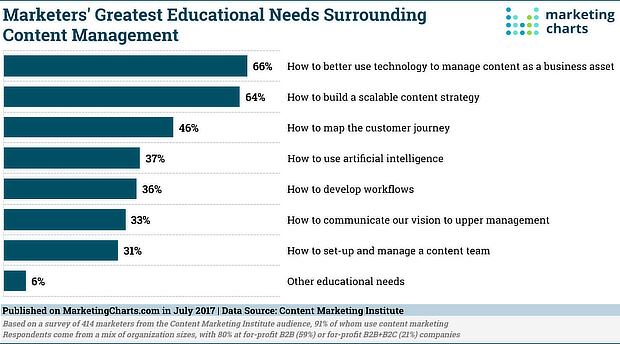It’s no secret that planning your content strategy is always going to be king. Keeping ahead of the competition means creating a content strategy that will make maintaining your website or blog seem almost effortless. However, even the most prolific bloggers have trouble creating a steady stream of fresh, relevant content year round.
According to research, developing an effective content strategy is a priority for more than 64 percent of site owners and admins.

Here’s a step-by-step guide to planning a strategy that will give your audience a year’s worth of timely content without too much effort on your part.
Set a Clear Mission and Goals
All good business plans start with a mission statement. This allows them to tailor business and marketing activities that line up with their values and goals. It’s the same with a content strategy.
Why are you in business and whom does your business serve? What are your core values, and how will your content creation strategy line up with your mission and values to achieve your goals?
Understanding Your Market Position
You can’t know where you’re going until you know where you stand. This principle is foundational in navigating the complex terrain of your industry, niche, and competitive landscape. Identifying your current position—is your business a budding startup, an established industry leader, or are you navigating the challenging waters somewhere in between a multitude of similar enterprises? Understanding your standing is the first step towards strategic planning.
Planning Your Content Strategy: The Foundation
Understanding your market position is key to crafting a content strategy that drives your business forward. A successful content strategy requires a deep dive into your marketing goals. Does your strategy focus on personal narratives, leverage FOMO, or solve specific pain points? It’s about hitting the mark with your target audience.”
Identifying Your Strategic Goals
Your content strategy must be a deliberate plan aligned with your business and marketing goals. It’s about choosing the right content types, distribution channels, and success metrics. Engaging posts, webinars, social media, and storytelling should all strategically drive your message home.
Tailoring Content to Your Audience
Moreover, planning your content strategy requires an understanding of your audience’s needs, preferences, and behavior. It’s about creating content that not only speaks to them on a personal level but also provides value, whether it’s through education, entertainment, or solutions to their problems.
In essence, knowing your position in the market landscape and strategically planning your content strategy are crucial steps in moving your business forward. By aligning your marketing and PR efforts with a well-defined content strategy, you’re not just shouting into the void. You’re speaking directly to your audience, addressing their needs, and setting your business apart from the competition. This strategic approach will not only enhance your brand’s visibility but also drive engagement, build trust, and foster long-term relationships with your customers.
Identify Key Performance Indicators (KPIs)
Once you’ve determined your reason for existing and where you currently stand in the bigger picture, you should determine the relevant KPIs for your content type, audience, and goals. Is your goal to attract new customers or are you trying to raise your revenues by a certain percentage? Your plan at each stage of the game will determine which metrics tell the true story of your viability and where you need to put forth a greater effort.
Know Your Audience and Platforms
If your audience consists of seniors or new parents, they’re unlikely to respond to a super-trendy presentation on a lifestyle blog for young professionals. In order for your content to resonate with your audience, it should be:
- built around topics that interest them and
- marketed on platforms they frequent
This requires knowing your audience almost as intimately as you know yourself and understanding the platforms that are most likely to reach them.
Use the Right Content for the Right Channel
Now that you’ve narrowed down specific audience segments and have a list of social media and marketing platforms they use, you need to tailor your content that performs well within those parameters. If you’re recreating content that’s mainly visual, consider InstaGram, PInterest, or YouTube. When you depend on feedback and interaction, market on Twitter or Facebook. Those looking to network can use platforms like LinkedIn.
Create a Calendar for Content
Next, you want to sit down and decide how often you’ll post. The easiest way to do this is by creating a content calendar that determines which days you’re going to post and what topics would work best within that schedule. For example, a blog that’s created with teachers in mind would want to focus on classroom or learning aids, child psychology, holidays, and possibly important legislation or seminars.
Planning in advance not only helps with timely content releases, it also provides your audience with consistent, relevant content they can look forward to reading on a set schedule.
Distribute, Measure, Retool
Content creation and scheduling are only as good as the results. If you want a solid, consistent ROI for your efforts, it’s important to assess your metrics and response to see what’s working and what’s just too much work for little reward.
One good way to assess your blog for engagement and reach is to study your metrics and analysis dashboards. Most eCommerce merchants and bloggers use Google Analytics. There are also plugins for WordPress, and each social media platform should have its own platform. You can also conduct an A/B test with audience segments to evaluate their reactions to various headlines and content.
Analytics will even tell you which days your audience is tuning in or reading. Once you know where your efforts are paying off, you can structure future content where it will do the most good.
Final Thoughts
Maintaining a blog or website is a full-time job, By planning your content strategy for the year ahead now, you’ll have more time for marketing and growing your audience.
Having trouble getting started? Talk to a content creation and marketing specialist today and get individualized insight about building your online brand.



































